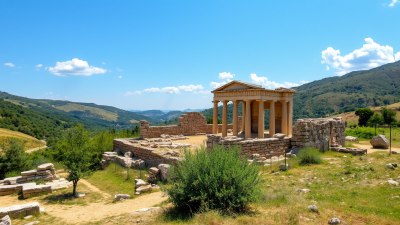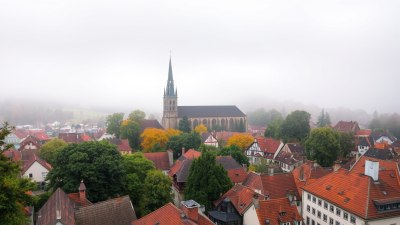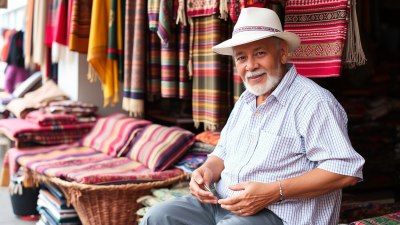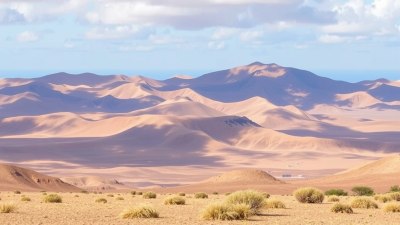Salt Roads and Forgotten Towns in Humahuaca, Argentina
Explore the hidden gems of Humahuaca, Argentina, through its ancient salt roads and forgotten towns.
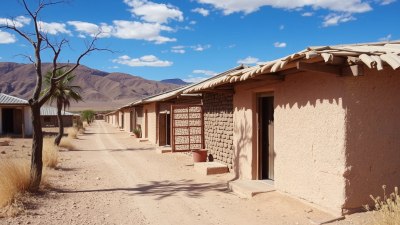
Image created with Flux Schnell
Nestled in the Andes of Northwestern Argentina, Humahuaca is rich in cultural heritage and breathtaking landscapes. This region, known for its striking mountains and picturesque valleys, offers travelers a unique glimpse into its storied past, particularly through the salt roads that historically shaped its identity. These routes not only facilitated the trade of salt, a vital resource, but also connected a myriad of forgotten towns, each with its own tales and traditions.
The salt roads of Humahuaca are a testament to the ingenuity and resilience of the indigenous communities that have inhabited this region for centuries. The traditional paths carved through the rugged terrain allowed for the exchange of goods, ideas, and cultures. As we embark on a journey along these ancient paths, we encounter towns that have faded from the limelight yet remain vibrant with tradition and history.
The Historical Significance of Salt in Humahuaca
Salt, often referred to as 'white gold,' was indispensable for preserving food and enhancing flavors. The communities of Humahuaca utilized salt not just for sustenance but as a crucial commodity that linked them with neighboring areas. The extraction and trade of salt have been a way of life for generations, and the remnants of these activities can still be seen in the region today. Understanding the importance of salt in this area allows us to appreciate the development of social and economic structures that supported these remote towns.
Exploring the Town of Humahuaca
The town itself, also named Humahuaca, is a vibrant center of culture and history. Known for its colorful houses and cobbled streets, the center of town is home to significant landmarks such as the Church of Our Lady of Candelaria and the historic monument of the Horned Cattle. These sites not only reflect the architectural styles influenced by colonialism but also showcase the blend of indigenous and European cultures that characterize the region.
Walking through Humahuaca allows visitors to engage with local artisans who proudly display their crafts, including textiles and pottery that embody the cultural narratives passed down through generations. The local markets buzz with activity, providing an opportunity for travelers to immerse themselves in the community atmosphere, tasting traditional dishes such as empanadas and locro.
A Journey Through the Salt Roads
As we venture out from the town of Humahuaca, we begin to trace the paths that once buzzed with activity. The salt roads, winding through the mountains, lead us to lesser-known villages where time seems to stand still. Each village we encounter has its own charm and appeal, offering insights into the lifestyles of those who inhabit unforgiving terrain.
Uquía: The Town by the Río Humahuaca
Our first stop is Uquía, a quaint town located about 15 kilometers from Humahuaca. Uquía is famous for its iconic church, which houses a collection of valuable artworks, including paintings of the arcángel San Miguel. This small town is also a gateway to the nearby Quebrada de Humahuaca, recognized as a UNESCO World Heritage Site for its dramatic landscapes and rich biodiversity.
The town's atmosphere is tranquil, with local residents often engaging in farming and artisanal practices. The surrounding landscape presents magnificent views of multicolored mountains, where layered rock formations paint a picture of geological history.
Tilcara: History and Cultural Heritage
Continuing along the salt roads, we arrive at Tilcara, a town steeped in pre-Columbian history. Tilcara is particularly recognized for its indigenous roots, particularly those of the Tilcara people, who built powerful fortifications known as the Pucará. Today, the site of the Pucará is a significant archaeological area that attracts historians and curious visitors alike.
The town is also famous for its artisan markets, where handmade crafts are sold. Engaging with local artisans offers a deeper understanding of the cultural significance embedded within their work. The vibrant colors present in textiles and pottery reflect not just artistic expression but the spirit of the Andean regions.
Purmamarca: The Enchanting Village
Purmamarca, perhaps most famous for its mesmerizing Cerro de los Siete Colores (Hill of Seven Colors), invites visitors to bask in the dazzling natural beauty. This small town is a spectacle, showcasing how nature and culture coexist harmoniously. The local community thrives on tourism, with its streets lined with stalls selling traditional crafts, and local delicacies, most notably the delectable alfajores.
The atmosphere in Purmamarca is lively—festivals often celebrate local traditions, and visitors are welcomed with warm hospitality. Beyond its stunning landscapes, Purmamarca offers an array of opportunities for hiking and exploring the natural surroundings, including trails that lead to breathtaking viewpoints.
Inside the Ruins of Uquia
As we continue our exploration, the next significant stop is the ruins of Uquia, located on the outskirts of the main township. These ruins serve as a deep reminder of the cultures that once flourished here. Not only an archaeological site, the remnants of ancient walls and structures offer insight into the way of life for those who inhabited them.
Walking through the ruins allows one to reflect on the fortitude and innovations of the indigenous civilizations. The serenity of this location coupled with the vastness of the surrounding mountains creates an atmosphere perfect for contemplation and appreciation of the past.
Las Salinas Grandes: The Grand Salt Flat
One cannot travel through Humahuaca without visiting Las Salinas Grandes, the expansive salt flats adjacent to the region. These immense white plains stretch for miles and are a sight to behold. The imposing, reflective landscape provides a stark contrast to the colorful mountains that frame the horizon. Las Salinas Grandes serve both as a significant mining area and a natural wonder attracting photographers and adventure-seekers.
Visitors can participate in guided tours to learn more about the extraction process and ecological importance of salt flats. The surreal scenery and unique geological formations provide endless photo opportunities, making it a must-see for anyone traveling through the region.
The Thriving Local Culture
Beyond the scenic beauty, Humahuaca is a cultural treasure trove. The area is home to distinct traditions, folklore, and music that resonate through the air as one travels from town to town. One of the more notable events is the Festival of the Pachamama, celebrated in August, where locals pay homage to Mother Earth and express gratitude for the year’s harvest.
Cultural expressions such as traditional folk music are an essential part of the social fabric. The sound of charangos (a small Andean string instrument) and bombos (a type of drum) creates a warm atmosphere, inviting both locals and tourists to partake in the lively festivities.
A Journey Worth Taking
The salt roads and forgotten towns of Humahuaca offer a profound journey through time and culture. Each step along these ancient pathways reveals stories and histories that continue to shape the identity of this region. The picturesque towns of Uquía, Tilcara, Purmamarca, and many others embody the spirit of community that thrives amidst breathtaking landscapes.
Visiting Humahuaca is not merely about witnessing beautiful scenery; it is an invitation to explore deeply-rooted traditions, engage with local artisans, and relish the vibrant culture. For those yearning to connect with history, nature, and the essence of Argentine culture, the salt roads and their hidden towns promise an unforgettable adventure.

